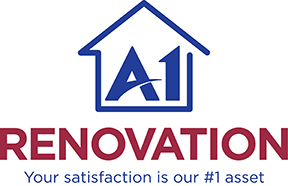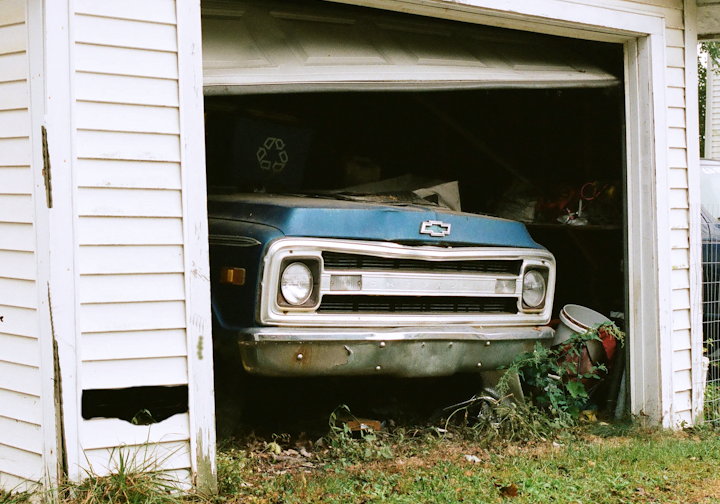It happens.
Whether it’s a moment of being distracted or just coming outside to see damage caused by someone else to your garage, it can be nerve-wracking.
One common situation is when the outer corner is caved in, possibly causing the corner to sag because the support is compromised.
While it’s not necessarily a matter of fixing it immediately or the whole garage going with it shortly thereafter, it’s certainly a safety concern for anyone in or near the garage. If something shifts or bumps the damaged area, there’s no telling whether that section will collapse.
If you’ve noticed this on your garage, you’ve done the right thing looking it up online and ending up here reading this.
If you’re in the Winston Salem area of NC, give us a call at 336-893-5901. This is something we’d want to look at as soon as it’s feasible to assess the degree of damage — as well as the quickest and smoothest way to resolve it.
Check if the appropriate insurance will cover it.
If it was a car that drove or backed into the garage, your homeowner’s insurance may not cover it. That tends to be something that your (or the person who caused the damage) car insurance would address, since the damage was caused by a vehicle.
Other times, though, it will be the other way around. Sometimes the insurance companies will look at it like this: since it was your house that was damaged, it has to be your homeowner’s insurance policy to address it.
There’s no way to know for sure without talking to them. Start with your homeowner’s insurance policy unless the damage was caused by someone else (and you know who it was).
Repairing The Garage Damage
That’s something a home remodeling contractor has to assess on the scene.
Sometimes, if it’s a matter where the wall has shifted but the supporting beams themselves are intact, the repair might be as straightforward as pulling the wall back into position, bolting things securely in place, and replacing damaged siding.
Other times when a car collides with a garage, it can lead to significant structural damage and compromise the integrity of the entire building.
The dangers associated with such damage include:
Structural Instability: The impact from the car can weaken the supporting structures. Those supports may no longer be able to properly support the weight of the roof or withstand future loads, posing a risk of collapse.
The most dangerous aspect of structural damage is that you never really know when it will fail. You might be lucky and it’ll hold together for a while, or it may collapse suddenly while someone is walking around inside (or nearby).
Electrical Damage & Safety Issues: If the collision affects electrical wiring, plumbing, or other utility systems within the garage, it can result in exposed wires, water leaks, or gas leaks. These damaged systems pose a fire or safety hazard and require immediate attention.
Some of these risks will be obvious, like exposed electrical wires or plumbing leaks. You may or may not have a carbon monoxide detector in your garage to alert you to gas leaks. When in doubt, call a professional to assess.
Mold and Water Damage: Depending on the severity of the collision, the garage may sustain water damage, which can lead to mold growth and rot. This can further weaken the structure and surrounding walls, as well as potentially affect the rest of the house itself. That’s a slippery slope you don’t want at all — both in terms of repair costs as well as how long your life will be disrupted while contractors work.
Here is a general process involved for garage repair for this kind of damage:
- Safety Assessment: The first step is to ensure the area is safe for workers and inhabitants. This may involve disconnecting utilities, stabilizing any hazardous conditions, and securing the area to prevent further damage.
- Structural Evaluation: An experienced structural engineer or architect should assess the extent of the damage. They will determine the severity of the structural issues and recommend appropriate repair solutions. This evaluation helps in developing an accurate repair plan.
- Obtaining Permits: Depending on local regulations, permits may be required for significant structural repairs.
- Demolition and Reconstruction: If the damage is severe, the affected parts of the garage may need to be demolished and rebuilt. This process involves removing damaged walls, beams, and other components, followed by the installation of new structural elements to restore stability.
- Electrical and Utility Repairs: If electrical or utility systems were affected by the damage, they should be carefully inspected and repaired by qualified professionals to ensure compliance with safety standards.
- Waterproofing and Insulation: To address any water intrusion issues, appropriate waterproofing measures should be taken. This may involve repairing or replacing damaged exterior materials, installing moisture barriers, and improving insulation to prevent future problems.
- Finishing the Look: Once the structural repairs are complete, the garage can be finished to restore its appearance and functionality. This may involve installing new doors, windows, flooring, and interior finishes as needed.
The actual repair process may vary depending on the specific circumstances.
Have some home damage that requires a skilled contractor? Call us today to review your situation.


